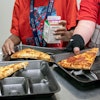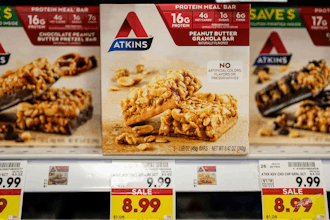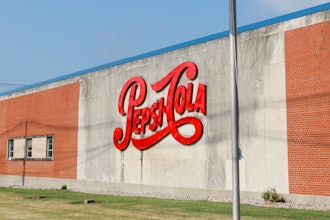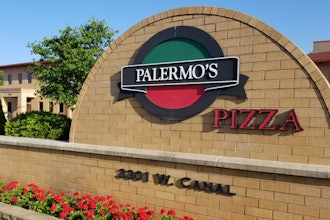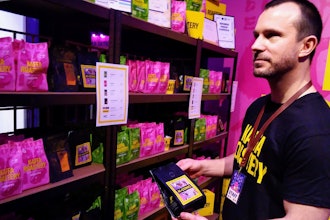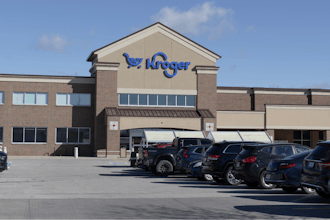It is that time of year, when students rush back into the classroom, meet their new teachers and discover what new adventures await — from learning long division, to dissecting frogs or studying the lifecycle of plants. While the course topics change, and new technologies enter the classroom, the fundamentals remain the same. The same is true in the food and beverage industry. For manufacturers overwhelmed with changing demands, a refresher course may be helpful.
It is well known that crops and harvests vary based on weather. It is also clear that consumer preferences change, packaging and labelling demands evolve, and innovative technologies, like the Internet of Things, are being introduced at a remarkable rate. Despite all this change, the core basics of customer satisfaction remain the same. Quality and compliance are still the foundational elements every food manufacturer must master. Quality + Compliance = Consumer confidence. That equation is still true, but the technological tools for success are ever-changing.
A New Crop of Pressures
Change is the only constant in the food and beverage industry. Not only will the volumes available from the various suppliers fluctuate, but the product quality will vary as well.
Technology, too, is rapidly changing, and food manufacturers that are early adopters will stay ahead of the competition and continually enhance their business capabilities. Innovative digital technologies now provide unprecedented levels of data and business intelligence — and C-level executives as well as business unit managers are making operational adjustments to truly leverage these insights to their fullest. This requires not only a change in workflows, but also a change in mindset. Incorporating new business solutions into the enterprise’s DNA is not as simple as flipping a switch.
These levels of change can become overwhelming and are actually redefining the fundamentals of sound food and beverage manufacturing business decisions — the very basics which lead to early successes. Exciting innovations, like robotics or Artificial Intelligence can seem like distractions from the critical concerns like flavor and consumer confidence. Yet in reality, these emerging technologies can play an important role in addressing these concerns. Although product quality and regulation compliance may seem like “old school” concepts, they are the foundation of food and beverage manufacturing which must continually be enhanced and reevaluated.
But, while the issues food manufacturers face are familiar, outdated technology is no longer sufficient for mastering these requirements. Modern cloud-based tools will not only improve efficiencies, but also provide important differentiating points. Here is fresh look at these basics and consider five critical points:
Five Steps in Achieving Quality and Consumer Confidence
1. Deploy a Modern ERP Solution in the Cloud. This is the fundamental building block that enables the application of modern best practices for collecting and accessing data, financial processes and day-to-day operational management of the entire enterprise, from customer accounts to ordering raw resources, tracking inventory and shipping orders. Choose an ERP solution with functionality specific to the food and beverage industry built-in — not bolted on — for seamless visibility throughout the organization.
Cloud deployment is also important. It provides speed and agility for pivoting to new regions, opening new branches, responding to changing regulations and establishing new product lines quickly and easily. Cloud solutions are also updated by the solution provider on a regular basis so the solution is always modern without the need for upgrades.
2. Comply with Labeling Mandates. With the aid of a modern Product Lifecycle Management (PLM) solution, complying with recent changes to the labeling laws is relatively easy. Without a PLM solution, keeping pace with the required changes can be time-consuming and frustrating. Failure to comply can lead to fines and even recalls. Labels provide the first chance to align with customers and assure them of the freshness and traceability of the product, including the details of ingredients.
The food manufacturer can see government-mandated labels as an annoying necessity — or a proactive organization can view the task as an opportunity to differentiate itself. Labels can provide the conscientious consumer with detailed information about ingredients, origins and sustainability. Consumers today feel strongly about their food and demand selections that meet their specific issues — from gluten-free to non-genetically-modified or organic-certified.
3. Manage Documents and Quality Control. A food and beverage manufacturer today needs a software solution to manage the many documents associated with each product offering for easy access in case of recall or questions about compliance or certification. Without a solution to simplify the tracking, the company can be buried in piles of paperwork or lost in chaotic confusion, causing costly delays and lost efficiency. Valuable data can be lost or difficult to find and cannot be fully leveraged for future decision-making. Gaps in documentation can cause unnecessary alarm and trigger recalls or fines.
A quality control system is also a necessity today as consumers have high expectations for product consistency and reliability. They expect their orange juice to taste exactly the same with each carton purchased, no matter where the oranges were sourced from and when. Technology can help manage quality control, helping the research and development teams adjust formulations of ingredients so the end results meets consumer expectations. Quality control solutions also make it possible for manufacturers to expand their networks of resources so that they have backup suppliers in cases when crops fail due to extreme weather conditions. A diverse list of suppliers helps maintain the necessary supply of ingredients, but means fluctuation in ingredient quality. With the right solution in place those variables can be accommodated for in each batch.
4. Drive FSMA Regulatory Compliance. It is well known how complex the Food Safety Modernization Act (FSMA) is and how critical compliance is. Less known are what solutions are available to help simplify and streamline the various steps that must be followed, from testing to documentation. Chose a solution which will help integrate business documents, plus define tests and parameters throughout the product’s lifecycle, starting with procurement and ending with manufacturing and shipping. An advanced solution will support the entire workflow, including specifying tests for a desired level of quality, executing lab requests and collecting test results, and validating against one or many item specifications.
5. Leverage Analytics and Business Insight. Modern Business Intelligence tools with predictive insights will be very helpful in forecasting consumer demand, understanding changing trends and refining sales forecasts and revenue plans. The various economic indicators as well as influencing trends can all be considered in your analysis, creating an accurate plan based on multiple dynamics. Modern solutions make it possible to be confident in your planning and take proactive steps to prepare for tomorrow.
Reaching Toward the A+
This back-to-basics primer can be used as a refresher course or as an evaluation tool to help determine if an organization can pass the grade. Companies have been pulled in so many directions recently that these foundational elements may have not received as much attention as they deserve. The basics are the essential building blocks. Be sure to brush up on the essentials and take time to re-educate on the many benefits of modern technologies — from ERP solutions to analytics.



